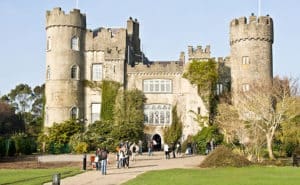The Rooftop Gardens of New York City: Exploring Tranquil Urban Retreats

Updated On: April 24, 2024 by Fatma Mohamed
In the midst of New York City’s bustling streets lies a serene escape atop its towering buildings: the rooftop gardens. These green spaces have been transformed into urban oases, providing city dwellers with a rare commodity in the concrete jungle – nature. Across the city, these elevated gardens offer not just aesthetic beauty but also play a crucial role in enhancing the urban environment, contributing to biodiversity, and providing spaces for relaxation and social interaction.
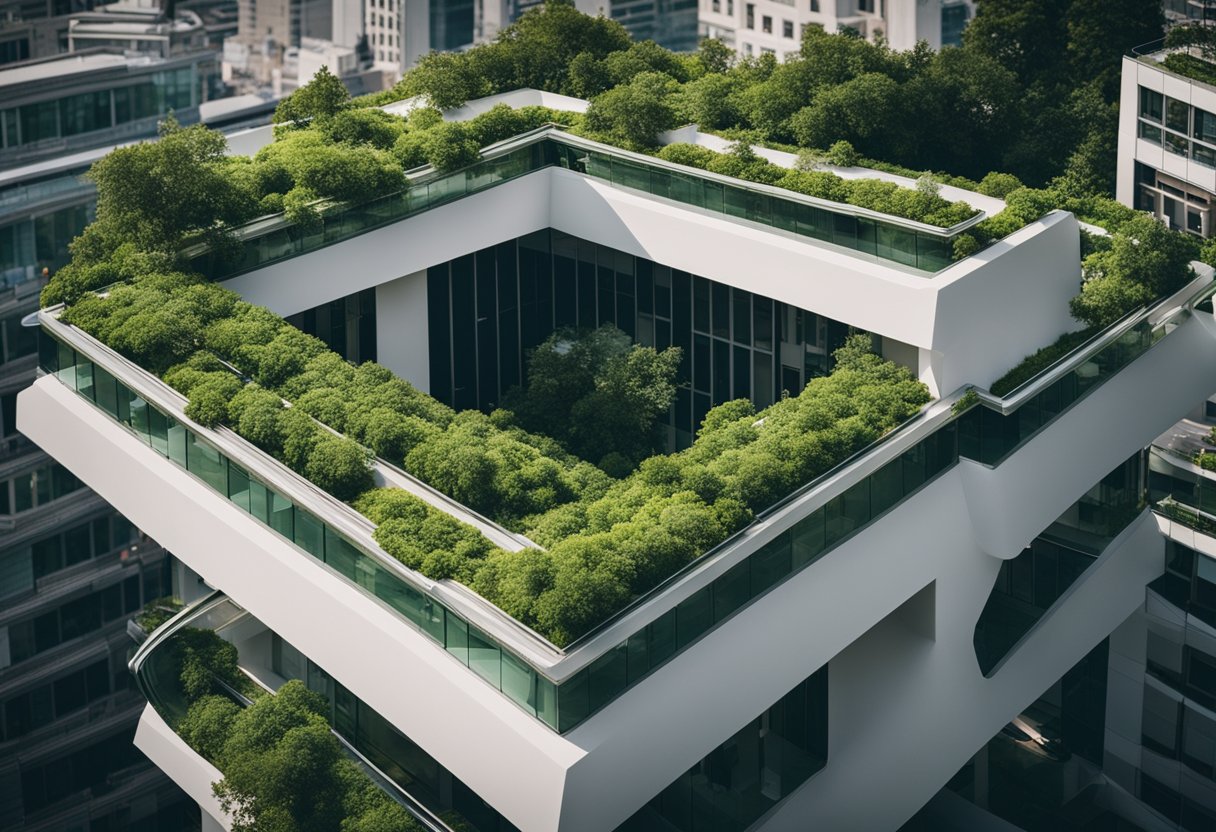
These rooftops range from small, private plots to extensive, professionally designed landscapes. Not only do they offer a respite from the urban grind, but they also serve as venues for local food production, community initiatives, and educational programmes. Meanwhile, technological innovations continue to redefine how these gardens are integrated into the urban fabric. As we explore the rooftop gardens of New York City, we uncover their significance in urban planning, their varied features, the principles of their design, and their contributions to environmental sustainability.
Table of Contents
The History and Evolution of Urban Roof Gardens
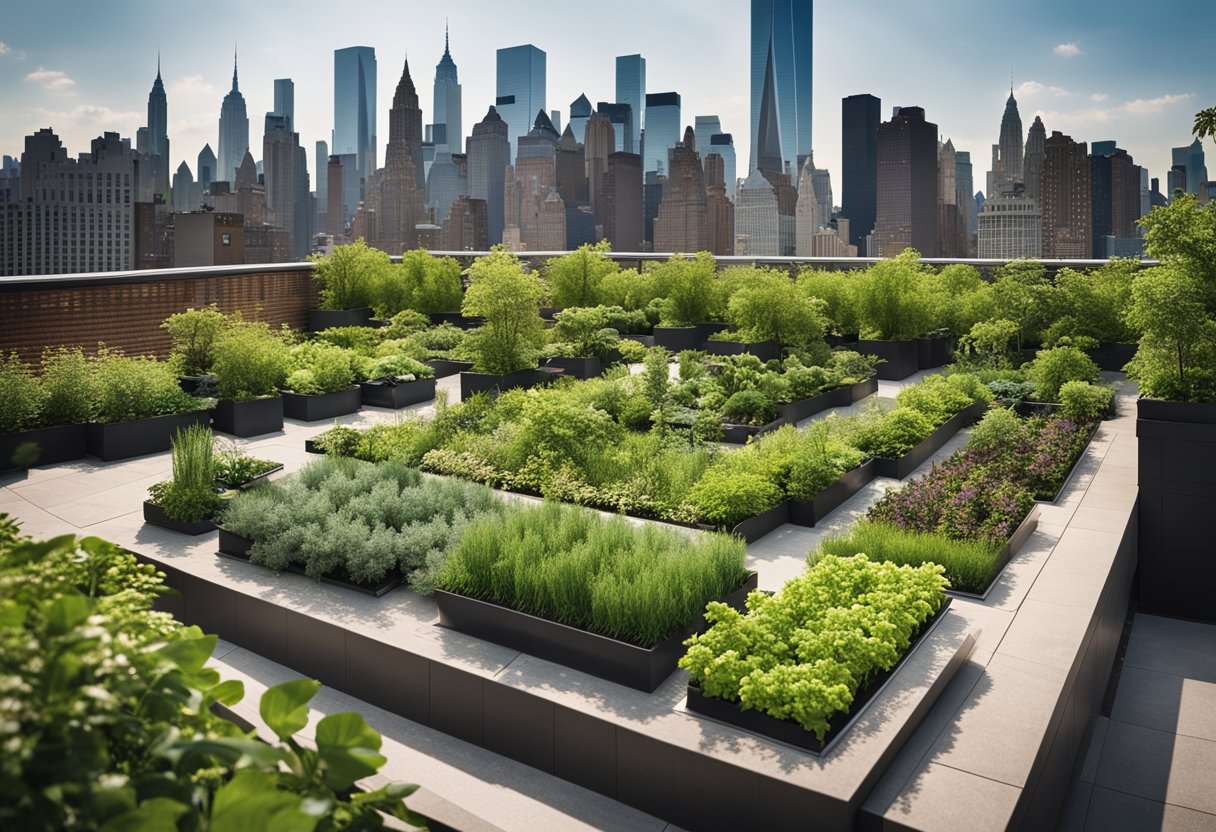
The inception of rooftop gardens in New York City harks back to the late 19th century. Amidst the Industrial Revolution, the metropolis burgeoned, and its residents yearned for greenery. The first notable execution of such a garden was in 1883, a confluence of theatre culture and horticulture atop New York buildings. In the early years, these spaces were not only recreational but also symbols of affluence.
By the 1890s, roof gardens had become a fixture in the urban landscape, serving a burgeoning middle class who gathered for open-air amusement. Lavish in their décor and often sponsored by influential families like the Vanderbilts and Morgans, they showcased the potential of underutilised space in the city.
As the years advanced, the allure of rooftop greenery did not wane. The contemporary role of these gardens in New York has transcended ornamental purposes, fostering environmental sustainability and community. Today, rooftop farms and gardens are integral to the city, contributing to its biodiversity and providing residents with spaces of tranquillity and restoration.
Historically, rooftop gardens served as escapes from urban rigour. Currently, they are redefining New York’s skyline, transforming roofs into verdant havens. They stand as testimonials of the city’s ingenuity and commitment to intertwining nature within the urban fabric. The evolutionary journey of New York’s rooftop gardens exemplifies how we can fuse functionality with sustainability, even in the densest of cities.
Design Principles and Structural Requirements
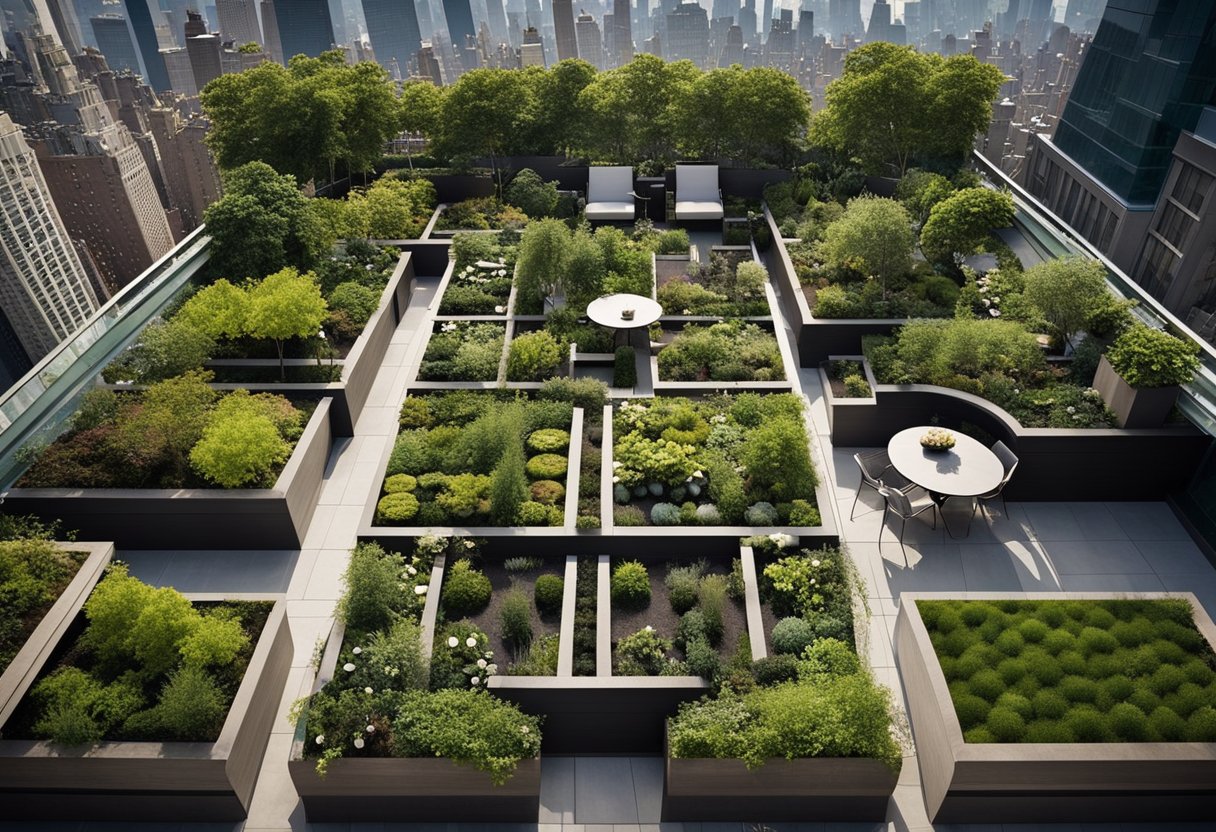
Designing rooftop gardens in New York City involves meticulous structural integrity to ensure safety and durability. As architects and city planners, we must adhere to strict zoning guidelines that provide clarity on the usage and definition of outdoor spaces. Our projects need to balance aesthetic appeal with regulatory compliance, focusing on both form and function to create sustainable urban oases.
Here are the essential principles we consider:
- Safety: We integrate safety barriers, secure access points, and non-slip surfaces to protect all.
- Water Management: Proper irrigation systems are vital for plant health and to prevent water damage.
- Fire Safety: Emergency access and fire safety precautions are paramount within the design.
- Weight Capacity: The building’s structure must support the additional load of the garden.
- Structural Assessment: A thorough evaluation of the roof’s capacity is required before installation.
Additionally, we use green roof technology to promote sustainability. These systems consist of layers, including waterproof membranes, drainage, and soil, to support plant life without damaging the building. They offer environmental benefits and help reduce the urban heat island effect.
By collaborating with city planners, we ensure that the rooftop gardens comply with urban landscape requirements, enhancing the city’s beauty and offering residents a touch of nature amidst the urban environment.
In summary, the key to a successful rooftop garden lies in blending design with safety, sustainability, and legal regulations to create not only a beautiful but also a functional space for the community.
The Role of Rooftop Gardens in Urban Planning
Rooftop gardens are transforming urban planning by introducing vital green spaces in densely populated cities. By utilising underexploited roof spaces, these gardens are addressing environmental challenges, promoting sustainable urban agriculture, and fostering community engagement.
In New York City, the integration of rooftop gardens into urban planning is multifaceted. Not only do these gardens enhance the aesthetic of the cityscape, but they also play a crucial role in:
- Creating pockets of nature that improve air quality
- Managing stormwater runoff
- Reducing the urban heat island effect
For instance, urban agriculture on rooftops contributes to local food production, subsequently reducing the carbon footprint associated with the transport of produce. It’s a form of direct action towards a more self-sufficient and ecologically responsible urban environment.
Moreover, these green spaces are revitalising community interactions. A community garden atop a building is more than just a place to cultivate plants; it’s a venue for educational workshops, social gatherings, and cultural events, bridging gaps between diverse groups of urban dwellers.
Environmental challenges in cities — including pollution and the scarcity of greenery — are being mitigated through these urban oases. The importance of integrating nature into daily city life cannot be overstated, as it brings tangible benefits to the mental and physical health of residents.
To encapsulate, rooftop gardens serve as a vital element in the sustainable progress of New York’s urban landscape, mirroring the shift in global perspectives on integrating nature with urban development.
Varieties of Rooftop Gardens and Their Features
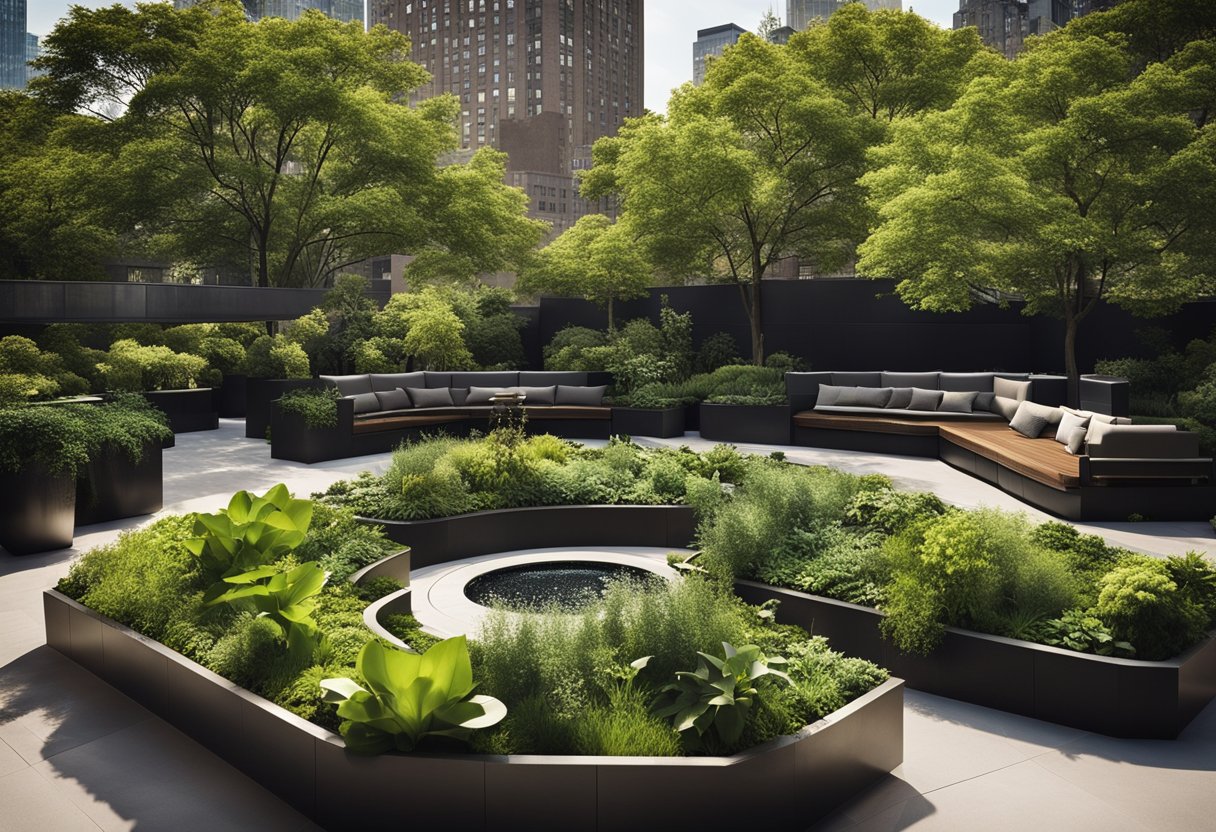
In New York City, we discover various types of rooftop gardens, each boasting their unique features and contributions to urban life. These green spaces are not only aesthetically pleasing but are pivotal in enhancing urban biodiversity and providing community benefits.
Green Roofs
A green roof is typically covered with vegetation and soil or a growing medium, planted over a waterproofing membrane. These are not only soothing to the eye but also play a crucial role in the insulation and temperature regulation of buildings.
- Features:
- Improves air quality
- Manages stormwater
- Provides insulation
Rooftop Farms
Rooftop farms serve as a source of local produce in an urban setting, often growing a variety of fruits, vegetables, and herbs. These farming initiatives can be found in commercial, residential, or community-owned spaces.
- Features:
- Fresh produce for local residents
- Educational programs on urban agriculture
- Can include apiaries for honey production
Community Gardens
These gardens are communal spaces where people can come together to cultivate plants, vegetables, and flowers. Often run by local organisations or volunteers, community gardens foster a sense of togetherness and are a hub for social interaction.
- Features:
- Social and communal engagement
- Skill-sharing and educational workshops
- Enhances local community spirit
Biodiversity and Ecosystem Support
Rooftop gardens, by their nature, support urban wildlife such as birds and pollinators and contribute to the city’s ecosystem. These lofty habitats allow for a respite of natural life amidst the concrete jungle.
- Features:
- Increases urban wildlife habitats
- Encourages a diverse range of flora and fauna
- Helps combat the urban heat island effect
We recognise the importance of integrating such spaces in urban design for sustainable living and community well-being. Each rooftop garden type brings its distinct elements to the mosaic of New York City’s landscape.
Environmental Impact and Sustainability Practices
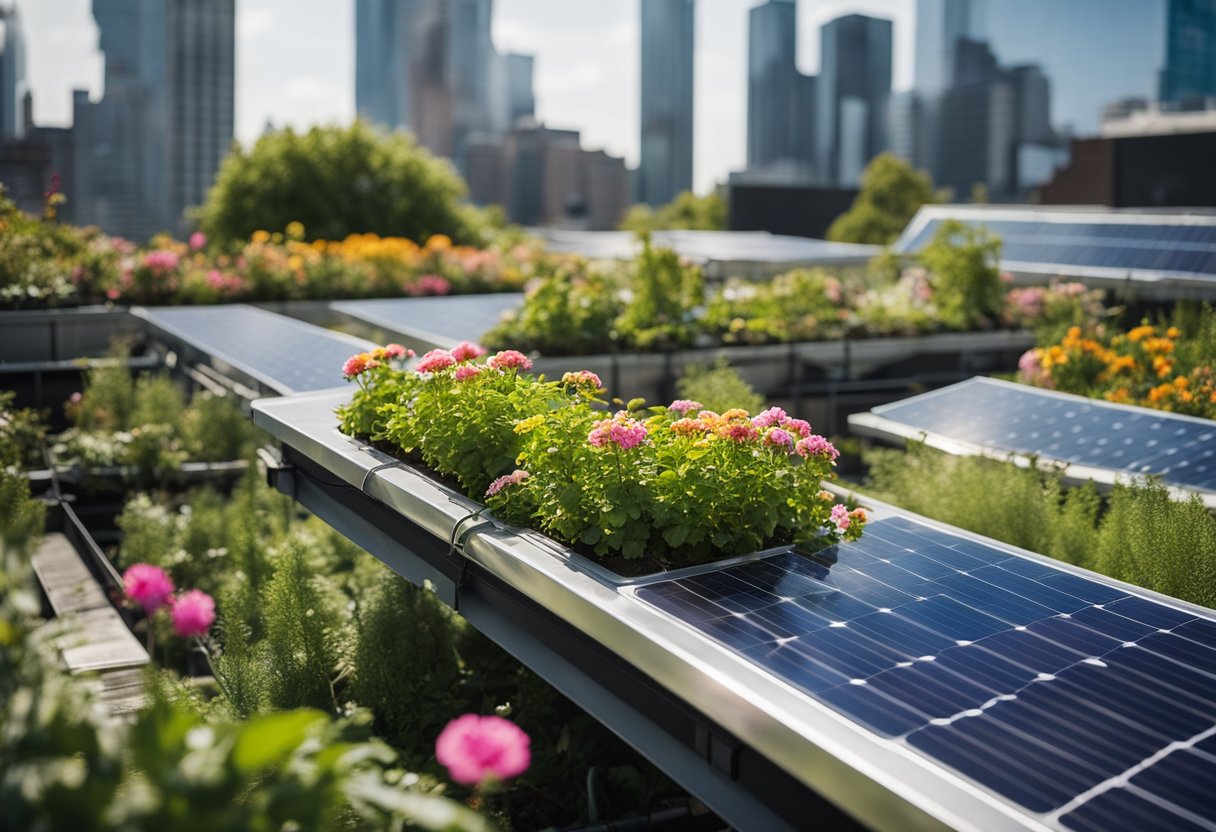
In New York City, rooftop gardens are more than just aesthetically pleasing spaces. These gardens have emerged as crucial components in the city’s sustainability efforts. They are known for their multifaceted environmental benefits, including their capacity to reduce the urban heat island effect. This phenomenon occurs when city temperatures rise higher than in surrounding rural areas due to heat absorption by roads and buildings. By adding vegetation at high levels, rooftop gardens can keep buildings cooler.
The design of these spaces often integrates rainwater harvesting systems, which play a significant role in sustainability by reducing the burden on the municipal water supply. The collected rainwater is used for irrigation, which is essential for maintaining the plants that populate these green roofs.
One of the notable environmental benefits of rooftop gardens, aside from providing a habitat for wildlife, is their contribution to improving air quality. Plants naturally filter pollutants and carbon dioxide, releasing oxygen back into the atmosphere. This process is critical in urban areas where air quality can be a significant concern.
Another critical aspect is energy efficiency. Rooftop gardens offer an additional layer of insulation, keeping buildings warm in the winter and cool in the summer. This, in turn, can substantially lower energy consumption for heating and cooling systems, resulting in lower energy bills and diminished environmental impact.
Through rooftop gardening, New York City not only gains valuable green spaces but also advances its environmental and sustainability objectives. These urban oases exemplify the power of innovative urban planning to benefit city dwellers and the environment alike.
Urban Agriculture and Local Food Production
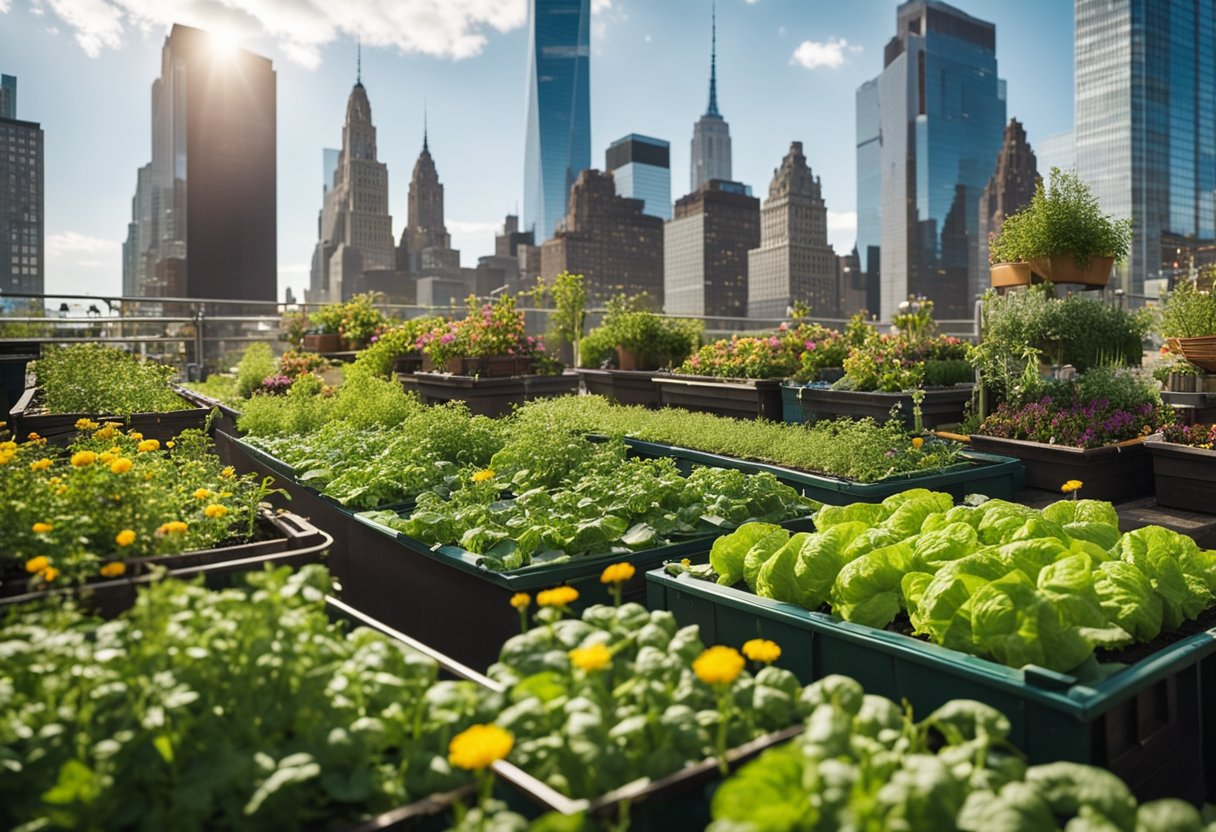
In recent years, we’ve observed a significant shift in the landscapes of New York City with the introduction of rooftop gardens and farm spaces. These urban oases have become pivotal for local food production, supplying residents with fresh produce straight from their city skyline. The urban agricultural movement has aligned closely with principles of sustainable farming, often focusing on organic practices to cultivate fruits, vegetables, and even herbs.
Rooftop farms in NYC, such as the Eagle Street Rooftop Farm, take advantage of underutilised spaces to create green areas that contribute not just to food production but also to the local ecosystem. These green spaces employ a range of innovative agricultural methods, including hydroponics and aquaponics, which allow for soilless farming and a year-round growing season. The result is a more resilient urban food system capable of withstanding external pressures like climate change and supply chain disruptions.
NYC’s urban farms also play a critical role in educational programming, raising awareness about the importance of local food systems. Initiatives by the Mayor’s Office of Urban Agriculture (MOUA) are encouraging community engagement, turning consumers into participants in the food production process.
Table 1: Benefits of Urban Agriculture
| Aspect | Benefit |
|---|---|
| Ecological | Strengthened community bonds and improved access to healthy foods. |
| Educational | Increased knowledge about sustainable agriculture. |
| Social | Strengthened community bonds, improved access to healthy foods. |
By growing food where people live, we substantially reduce carbon emissions related to food transport and create a buffer against food deserts in urban areas. Our commitment to urban agriculture offers a blueprint for cities worldwide to adopt more sustainable practices that benefit both the planet and the populace.
Community Initiatives and Educational Programmes
We find that across New York City, community gardens are blossoming into spaces that foster not only greenery but also communal learning and engagement. These urban oases host a variety of workshops and events, aiming to educate residents on sustainable practices and the importance of local ecosystems.
Workshops: Hands-on workshops are an integral part of nurturing community skills and knowledge about urban agriculture. For instance, participants can learn about composting, plant care, and the ecological benefits of green spaces.
Educational Programmes: Programmes such as City Growers offer a practicable educational experience, transforming rooftop gardens into interactive classrooms for the youth. These are vital for the education of future generations on the sustainability of urban farming.
Community Engagement: Many events centred around rooftop gardens emphasise community engagement, bringing people together to discuss and collaborate on improving their local environments.
Events: Seasonal fairs and farmer’s markets held at garden sites invite the broader community to enjoy the products of their joint efforts— emphasising a farm-to-table ethos.
| Community Activity | Description |
|---|---|
| Community Garden | A place for growing produce and fostering community ties. |
| Workshops | Sessions for learning about urban sustainability. |
| Events | Opportunities to celebrate and share the garden’s bounty. |
| Educational Programmes | Curriculums to inform youth about urban farming practices. |
In our communities, each garden serves as a beacon, highlighting how urban spaces can integrate nature and learning for a more resilient future.
Economic Implications and Property Value Enhancement
The introduction of rooftop gardens to New York City’s skyline has far-reaching economic implications, considerably enhancing property values. These urban green spaces are not merely aesthetic additions; they represent a substantial investment in the long-term viability and desirability of properties.
Economic Benefits:
- Attracts investments by showcasing innovation in urban design.
- Reduces energy costs through natural insulation.
- Provides potential revenue through urban farming initiatives.
Property Value Enhancement:
- Increases the desirability of properties: The addition of a rooftop garden offers a distinctive feature that can distinguish a property from others, potentially leading to higher sale prices.
- Enhances tenant retention rates: For rental properties, the presence of a rooftop oasis could be the deciding factor that keeps tenants in place longer, reducing turnover costs.
Food Security:
- Encourages local food production, which can reduce dependency on remote supply chains and promote nutritional sovereignty in the urban landscape.
Benefits to Local Communities:
- Health: Rooftop gardens contribute to improved air quality and offer residents places for relaxation and leisure.
- Social: These spaces can serve as community hubs where residents gather, fostering a sense of community and shared ownership.
In our pursuit to create livable, sustainable, and economically vibrant cities, we recognise that rooftop gardens have the power to transform urban living. As we continue integrating green infrastructure into our city’s fabric, the potential for positive economic impact is undeniable. Through such innovations, urban residents reap benefits that transcend mere aesthetics, reinforcing the value of both community and individual property investments.
Health Benefits and Recreational Opportunities
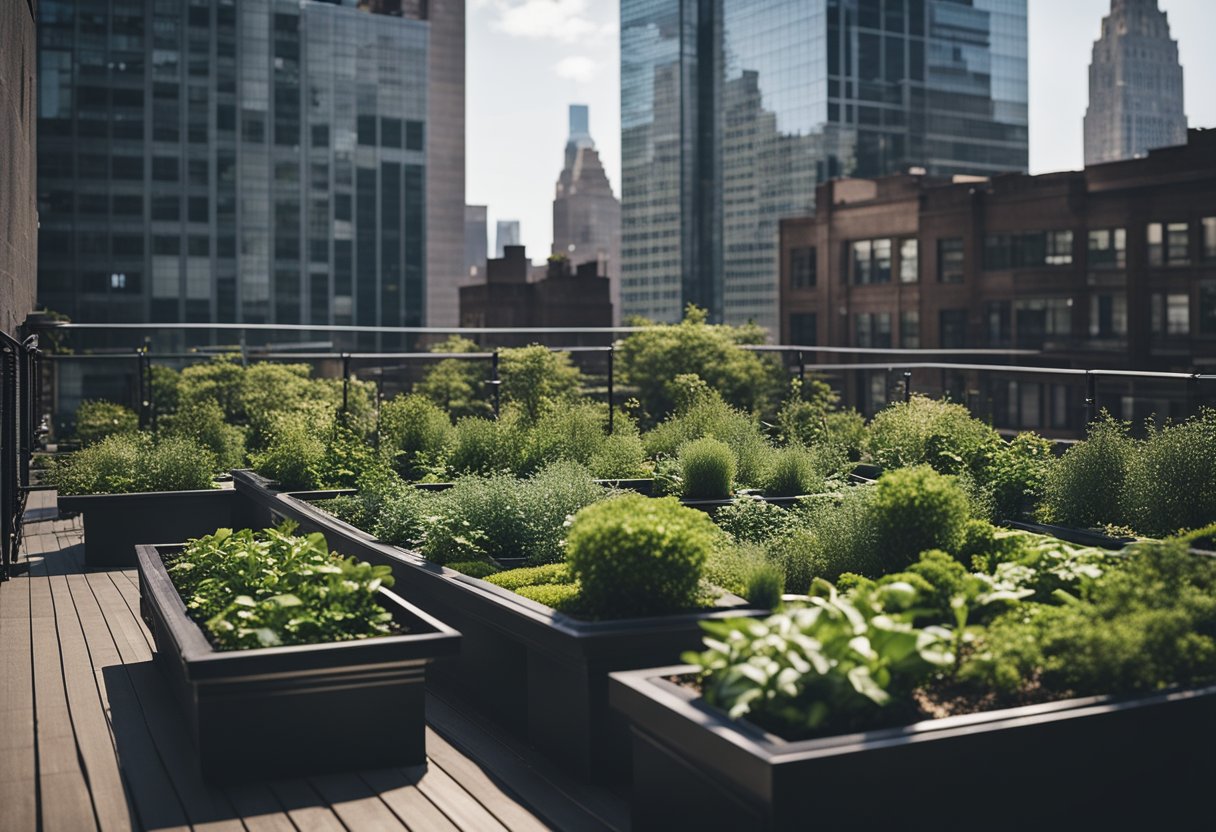
In the concrete jungle of New York City, rooftop gardens serve as tranquil green spaces, providing essential health benefits for city dwellers. These urban oases offer a respite from the city’s hustle, contributing positively to mental health and well-being. The presence of plants and greenery can lower stress levels, improve mood, and enhance concentration.
Physical and Mental Health:
- Reduction in stress: Interaction with nature relaxes the mind.
- Improved air quality: Plants filter pollutants, giving us cleaner air to breathe.
Recreational Spaces:
- Gardens on rooftops present unique recreational opportunities.
- They can be utilised for meditation, yoga, or simply unwinding amidst nature.
Community Engagement:
- These gardens often host community events, bringing people together.
- Educational workshops about sustainability and urban horticulture thrive here.
Biodiversity:
- Rooftop gardens are known to increase urban biodiversity, creating habitats for birds and beneficial insects.
By integrating nature into urban settings, these gardens not only alleviate the pressures of city life but also encourage outdoor activities. Whether for growing vegetables or holding community gatherings, rooftop gardens enhance our quality of life.
To learn more about how urban agriculture is reshaping cityscapes, see how The Rise of Rooftop Gardens explores these developments. Additionally, the potential uses of these gardens, such as outside study spaces with Wi-Fi access, offer a tangible way to enjoy the outdoors while staying productive.
Through careful design and community engagement, rooftop gardens in New York unfurl as spaces of rejuvenation, fostering both individual health and community vibrancy.
Technological Innovations in Urban Gardening
We are witnessing a remarkable shift in how urban spaces are utilised with the integration of technology in urban gardening. New York City’s rooftop gardens are at the forefront of this revolution, displaying some of the most innovative approaches to cultivating crops in the heart of the urban jungle.
Hydroponics is a game-changer in urban agriculture, allowing plants to grow in a water-based, nutrient-rich solution without soil. The method not only saves space but also conserves water, making it ideal for rooftop gardens where weight and resources are limited.
Aquaponics combines hydroponics with aquaculture. Fish produce waste that serves as an organic nutrient source for the plants. This symbiotic system mimics natural ecosystems and provides a double yield – both fish and plants, which is a clever use of vertical space.
Our approach to irrigation systems has become more sophisticated. Drip irrigation, a method that delivers water directly to the plant’s roots, minimises evaporation and water runoff. This efficiency is vital in densely populated areas such as New York City, where water conservation is a priority.
The deployment of solar panels within garden spaces captures sustainable energy, powering everything from irrigation pumps to lighting. Solar power ensures that our rooftop gardens leave a minimal carbon footprint, further enhancing their role as an eco-friendly sanctuary in the city.
- Hydroponics: Water-efficient cultivation
- Aquaponics: Symbiotic plant and fish production
- Irrigation Systems: Targeted water delivery
- Solar Panels: Eco-friendly energy source
We ensure that all technological innovations employed are practical, sustainable, and beneficial to our urban green spaces. Our aim is to continue advancing these technologies, creating greener cities and a healthier environment. By integrating modern technologies into urban gardening, we transform rooftops into more than just idle spaces – they become key players in the city’s resilience against climate change.
Notable Rooftop Gardens and Projects in NYC
New York City is home to several impressive rooftop gardens and urban agriculture projects that contribute significantly to the city’s sustainability and community health. Here are some of the noteworthy ventures:
- Brooklyn Grange: Spanning over 2.5 acres of intensive roof gardens, the Brooklyn Grange operates one of the largest urban agricultural ventures in the world. They not only produce over 22,000 kg of organically cultivated produce per year but also host a variety of educational programs and events.
- Eagle Street Rooftop Farm: Situated on the shores of the East River, this 6,000-square-foot green roof organic vegetable farm is a pioneer in urban farming education in New York City.


